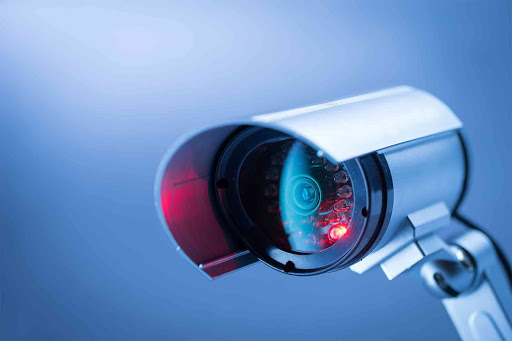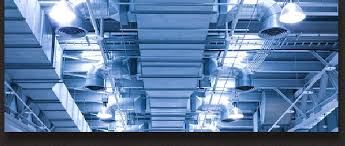When many of us in the electrical contracting industry think of temporary electrical installations, we tend to think of the wide range of short-term installations such as public or private exhibitions or events, parties or events associated with the entertainment industry like touring shows, theatrical, radio, TV or film productions. But in fact, temporary electrical installations are usually required at some stage for a range of new building projects, large and small, and even existing buildings can be subject to temporary installations. A temporary supply may also be required where a building is to be demolished or even needed due to unforeseen circumstances, such as failure of critical supplies. In short, temporary supplies are an integral part of the electrical installation industry. This article will address the topic of temporary electrical installations. We’ll discuss two specific scenarios, each requiring temporary supplies for different reasons and each having very different loads. We’ll then review some issues to consider when installing temporary power supplies. Scenario 1 – a data centre In a large data centre, a rising busbar with a source from an air circuit-breaker (ACB) rated at 3,200 A, supplies main switch panels each of which, in turn, supplies critical IT loads and their associated supporting infrastructure, such as cooling equipment. Due to recent flooding, the main busbar has shorted out, resulting in a loss of supply. An uninterruptible power supply (UPS) had been installed. The UPS system is comprised of a battery system to supply IT equipment during short-term outages, backed up by diesel generators. When the supply failed, the UPS system took over and performed as intended. However, a replacement busbar had a six-week delivery time and there would be a further delay to allow for its installation due to business critical issues. A realistic estimate was that it could take two to three months to replace the busbar. The manufacturer of the generators advised that the generators couldn’t be relied upon to maintain the supply adequately for that amount of time. To ensure resilience of supply for the critical system, a decision was taken for the temporary installation of cables to replace the rising busbar to power the critical loads until the replacement busbar could be installed. The cables could then be run from the original ACB to the main switch panels supplying the critical loads. Scenario 2 – a construction site In a large construction site, the site project manager had underestimated the power requirements for the site and separate generators had to be installed to provide temporary supplies to the tower crane, hoist and maintained lighting for flats under construction. A document of interest is BS 7375:2010, Code of practice for distribution of electricity on construction and building sites. BS 7375 is referred to in two notes in Section 704 of BS 7671 with regard to PME earthing facilities and Regulation 704.411.3.1 places restrictions on the use of PME earthing for an installation falling within the scope of Section 704. Most construction sites are provided with a TT supply which requires an RCD to provide automatic disconnection in case of a fault. Regulation 704.411.3.2.1 states that an RCD with a rated residual operating current not exceeding 500mA must be used (consult this Regulation for the complete requirements). Guidance on earthing is contained in BS 7430:2011, Code of practice for earthing. Temporary electrical installations and BS 7671 Temporary electrical installations can carry risks, even in the most benign of environments. BS 7671 applies, not only to fixed installations, but also to temporary installations. There is no relaxation of safety standards in BS 7671 for temporary installations. BS 7671 defines a temporary electrical installation as an, ‘Electrical installation erected for a particular purpose and dismantled when no longer required for that purpose’ (Part 2, Definitions). Regulation 110.1.3 states that, in some cases, BS 7671 may need to be supplemented by the requirements or recommendations of other standards and, included in a list of examples is BS 7909, Code of practice for temporary electrical systems for entertainment and related purposes (item ix). Running temporary cables The cross-sectional area (csa) of the temporary cables must be adequate for the loads to be supplied, taking voltage drop into account together with any applicable rating factors. When running temporary cables which are buried in the ground, the general requirements for buried cables given in Regulation 522.8.10 must be consulted. That is, the cable must either be run in a conduit or duct or else have an earthed armour or metal sheath, or both, suitable for use as a protective conductor incorporated. Buried cables, conduits and ducts must be buried at a sufficient depth to avoid being damaged by any reasonably foreseeable disturbance of the ground. A depth of 0.5 m is generally considered as a minimum depth. When running temporary overhead cables, the guidance contained in Appendix G of IET Guidance Note 1, Selection and Erection and also in Table D2 of the IET On-Site Guide is applicable. Generally, overhead cables must be suitable and adequately supported with a maximum length of span of 30 m and a minimum height above ground of 5.8 m where vehicles may run underneath and 3.5 m in areas inaccessible to vehicles. Guidance for running underground and overhead cables in specific circumstances are given in Sections 708, 709, 730 of BS 7671. Conclusion There is no limit to how long a temporary electrical installation may remain in operation and the designer must consider the possibility that it might remain in operation for longer than anticipated and design the system accordingly. When designing temporary installations, the risks must be assessed, and certification must be provided in accordance with BS 7671. Table 3.2 of IET Guidance Note 3 Inspection and Testing contains recommended initial frequencies of inspection of electrical installations. Temporary installations are not mentioned specifically but the recommendation that construction site installations should be inspected and tested every three months seems reasonable to apply to temporary installations. For more information on NAPIT, click here.







